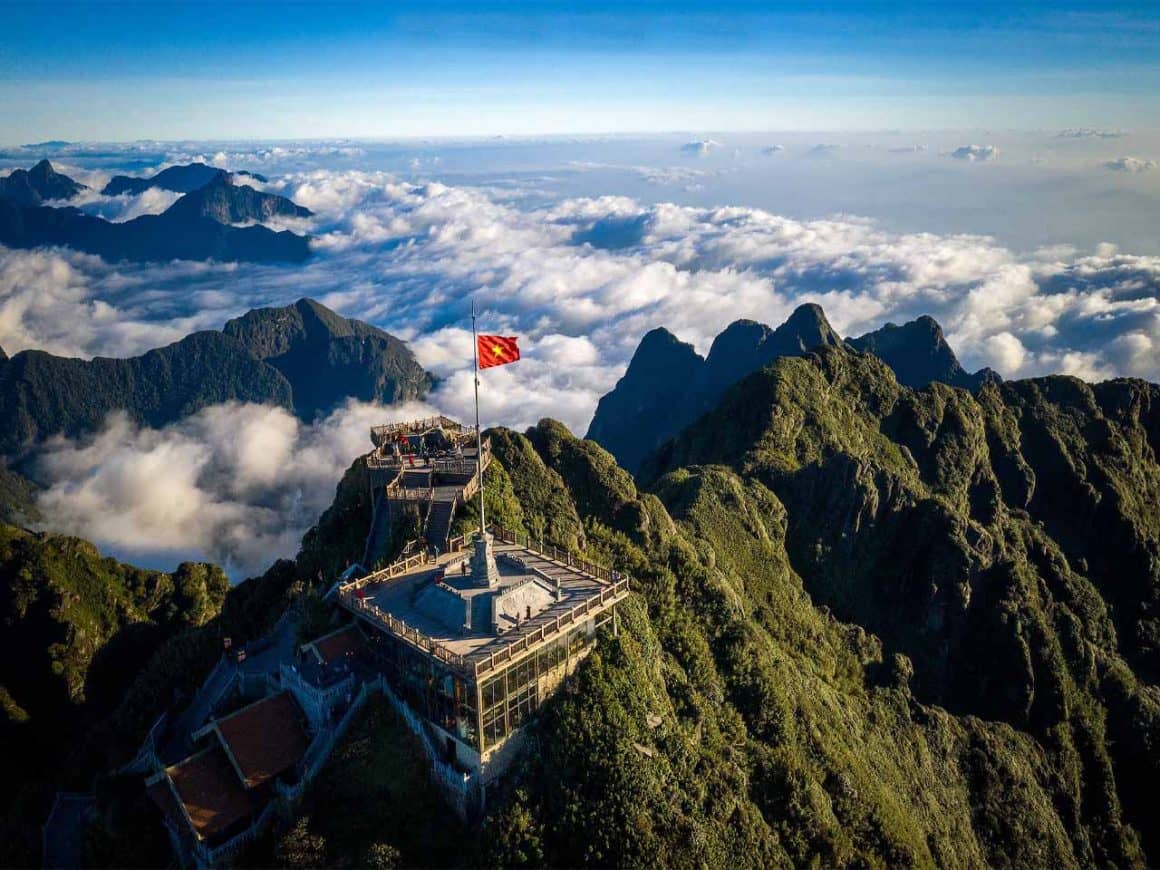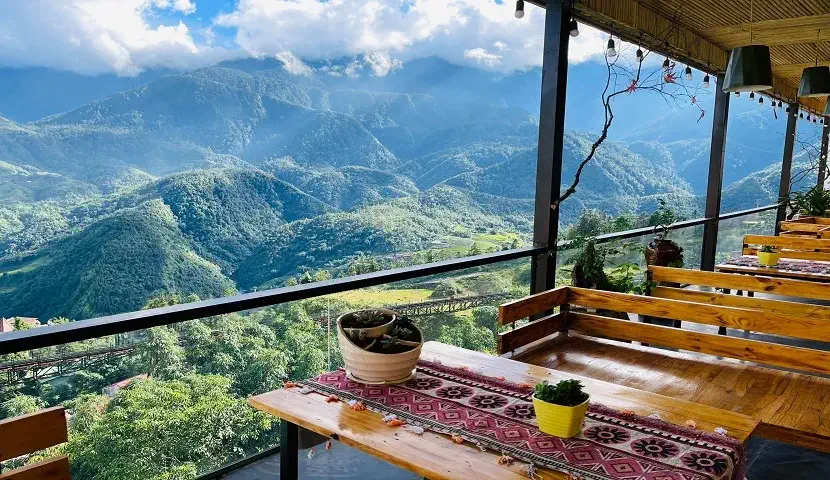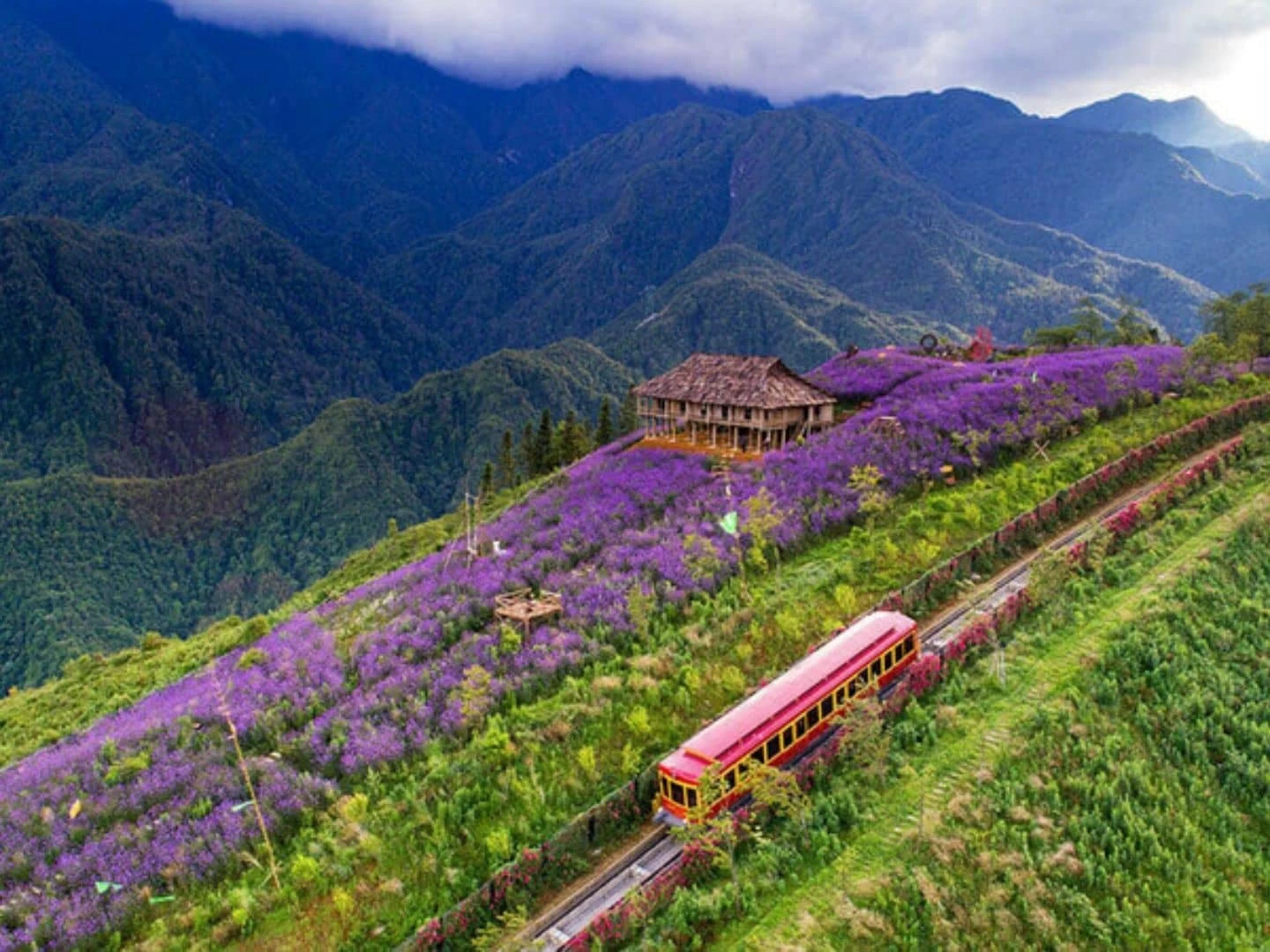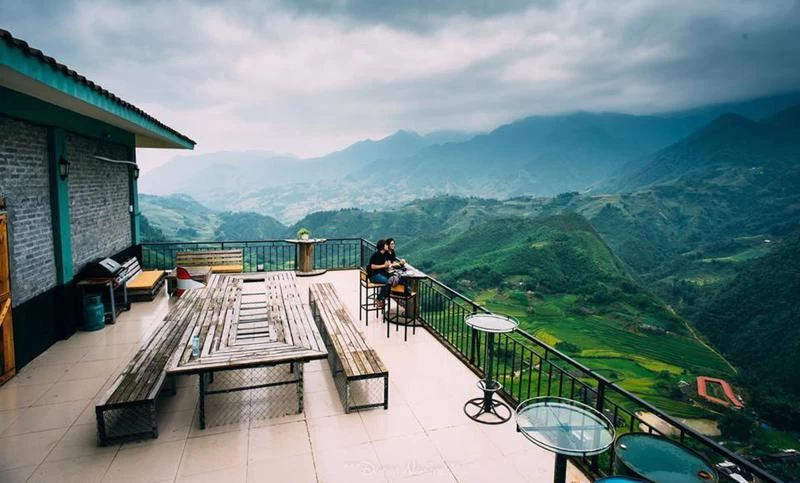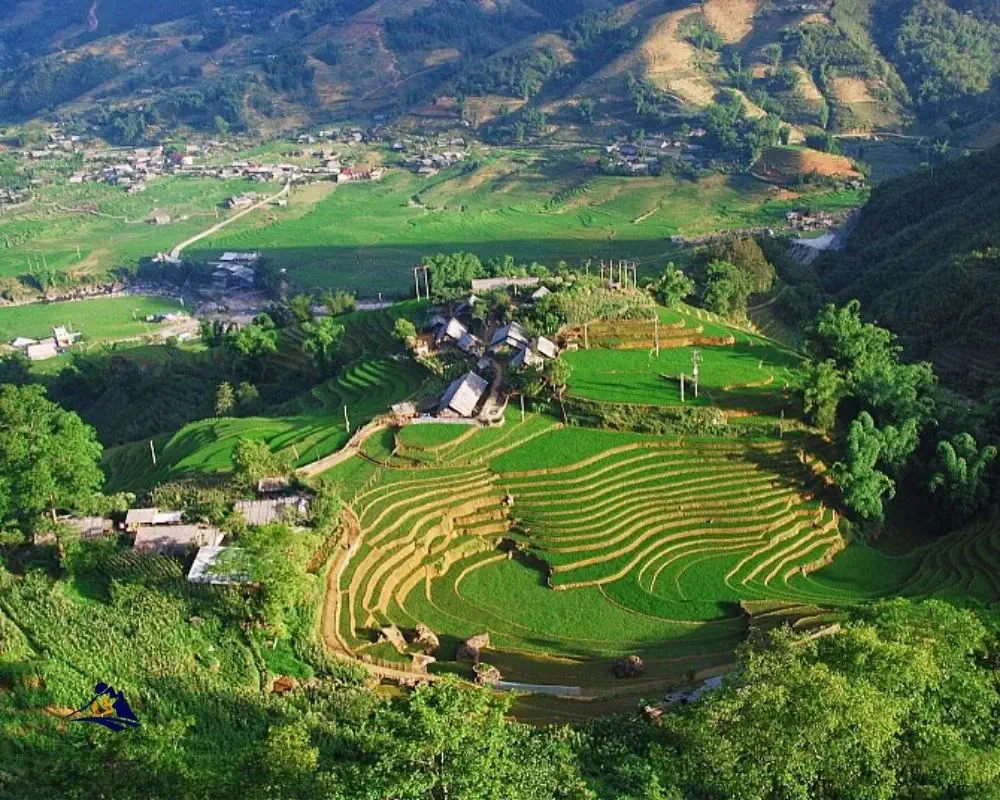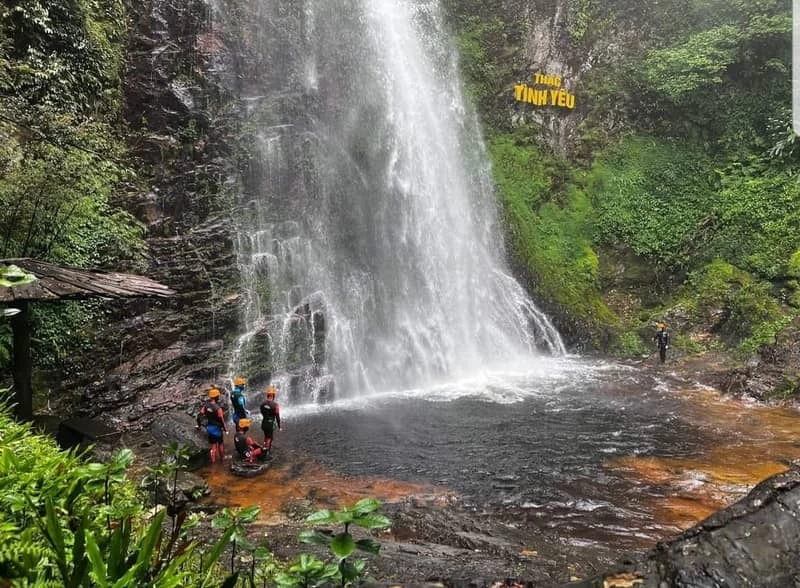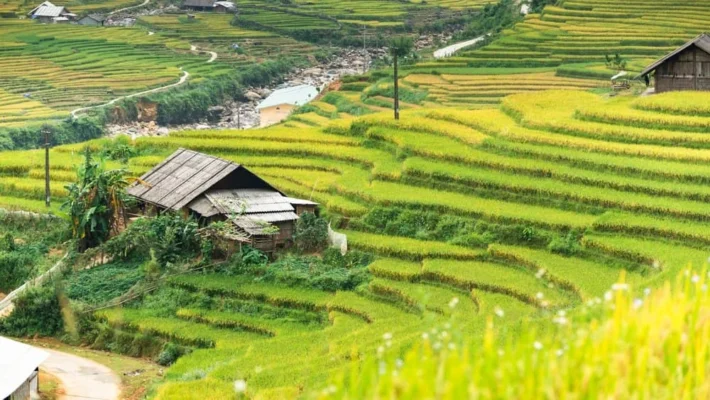
Let’s explore the most beautiful terraced fields in Sapa!
Discover the breathtaking beauty of Sapa rice terraces, a stunning destination in northern Vietnam. Explore lush green landscapes and golden fields that showcase the traditional farming practices of the local ethnic communities. Learn about the rich cultural heritage and enjoy trekking through picturesque valleys like Muong Hoa and Lao Chai. Perfect for photography enthusiasts and nature lovers, Sapa’s terraced fields offer an unforgettable experience. Plan your visit with Ula Travel today.
I. Introduction to Sapa Rice Terraces
1. Overview of Sapa
Sapa is celebrated for its stunning natural beauty, including rolling hills, verdant terraced rice fields, and towering mountain peaks. The town is famously home to the majestic Mount Fansipan, the highest peak in Vietnam, and the entire Indochina Peninsula. Visitors to Sapa are often captivated by its scenic landscapes, characterized by lush valleys, winding rivers, and dramatic mountain vistas.
As a destination, Sapa is known for its warm hospitality and the opportunity it provides for cultural immersion. Visitors can engage in a range of activities, from trekking through terraced rice fields and exploring traditional villages to sampling local cuisine and attending cultural performances.
2. The Importance of Rice Terraces in Local Culture and Daily Life
The Sapa rice terraces are not only a natural wonder but also a vivid testament to human ingenuity and perseverance in overcoming harsh natural conditions. Created over generations, these terraces are the primary method of wet rice cultivation for the H’Mong and Red Dao people. They not only provide a vital source of food for the local communities but also play a crucial role in sustaining life in this mountainous region.
The rice terraces are more than just agricultural fields; they are cultural spaces where collective farming activities, harvest festivals, and traditional rituals take place. They symbolize community unity and the deep connection between people and nature.
Read more: Hanoi to Sapa tour
II. Best Places to View Sapa Rice Terraces
1. Muong Hoa Valley
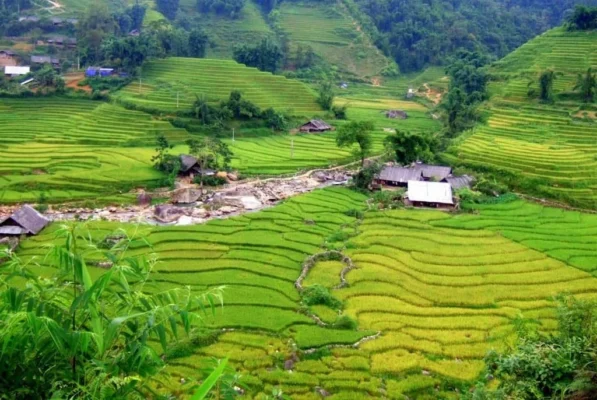
Muong Hoa Valley
Located about 10 km from Sapa town, Muong Hoa Valley is one of the most famous destinations, featuring terraced rice fields stretching across the hillsides. The valley is nestled between majestic mountain ranges and is home to many ethnic minority groups, such as the H’Mong, Dao, and Tay people.
- Stunning Landscape: Muong Hoa is renowned for its terraced rice fields, which gracefully contour the land like soft lines on a painting. During the rice harvesting season (from September to October), the valley turns a vibrant golden hue, attracting thousands of visitors. In the watering season (from May to June), the fields shimmer with water, reflecting the sky in a mesmerizing way.
- Cultural Experience: Traditional stilt houses, warm smiles from the locals, and handicrafts such as brocade and silver products are highlights not to be missed. The route leading into Muong Hoa offers a delightful experience as you pass through small streams, hanging bridges, and lush green fields.
Start your journey with: Hanoi to Sapa Private Tour
2. Lao Chai -Ta Van Village
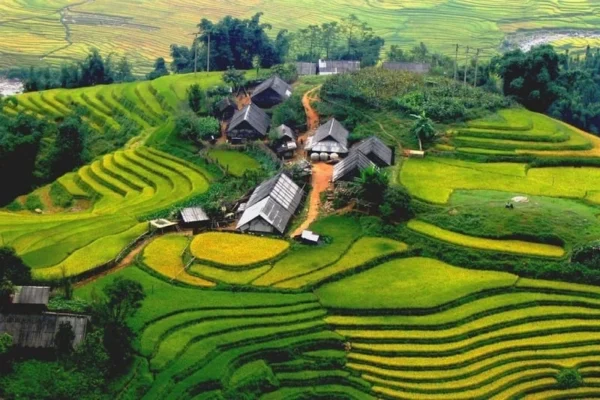
Lao Chai -Ta Van Village
The trekking route from Lao Chai to Ta Van is ideal for those who love adventure and cultural exploration. These villages are home to the H’Mong, Dao, and Giay people, famous for their terraced rice fields stretching endlessly across the mountain slopes.
- Village Exploration: Tourists can hike through these villages to admire the terraced fields from above, feeling the serene beauty of highland life. Winding trails lead you through traditional houses, verdant rice paddies, and crystal-clear streams. It’s also the perfect spot to take a break, chat with locals, and immerse yourself in daily life.
- Cultural Experience: The villages of Lao Chai and Ta Van are not only known for their scenic views but also for their rich cultural heritage. Visitors can join activities such as weaving brocade, farming with locals, or tasting traditional dishes like thang co (a local stew) and corn wine. Homestays with views overlooking the terraced fields are ideal for those seeking a rustic
Are you looking for Sapa tours?
3. Cat Cat Village
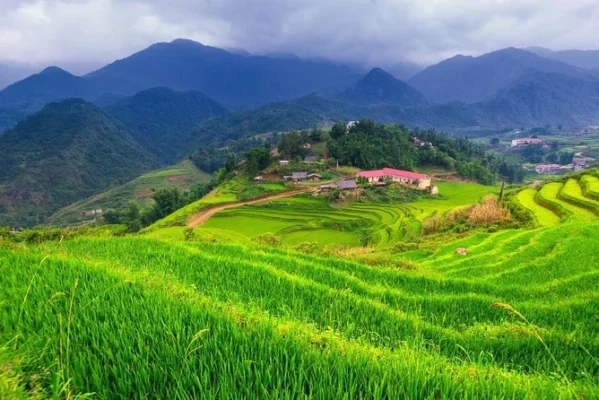
Rice terraces at Cat Cat Village
Cat Cat Village is one of the most accessible spots in Sapa town, just 3 km away. Surrounded by the Hoang Lien Son mountain range and nestled amidst lush terraced fields, Cat Cat is famous for its picturesque scenery and offers visitors an easy way to learn about H’Mong culture.
- Unique Landscape: The path leading to Cat Cat Village is an enjoyable experience, featuring stone steps, wooden water wheels, and a serene stream running through the village. While the terraced fields here are not as vast as those in Muong Hoa or Lao Chai-Ta Van, they still offer stunning views, making it easy for visitors to capture impressive photos. During the harvest season, the golden fields create a warm and inviting atmosphere.
- Cultural Experience: Cat Cat Village is also an ideal place to learn about traditional crafts such as textile weaving, silver smithing, and papermaking by the H’Mong people. You can participate in cultural performances like khen dancing, umbrella dancing, or enjoy traditional ethnic art shows at the village center. This is a perfect stop for those with limited time but still wanting to experience the full charm and culture of Sapa.
4. Y Linh Ho Village
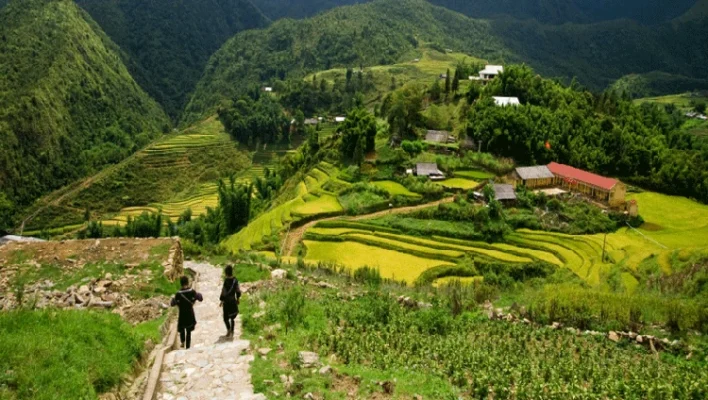
Y Linh Ho Village
Y Linh Ho Village is a small, tranquil village nestled deep in the Muong Hoa Valley. The village is home to the Black H’mong ethnic group, known for their traditional indigo-dyed clothing and unique culture. Y Linh Ho offers some of the most pristine and unspoiled rice terraces in Sapa, making it a perfect destination for those looking to explore nature and local life.
- Unique Landscape: The rice terraces here cascade down the mountainside, creating stunning layers of green during the growing season and golden hues in harvest time. The terraces are interspersed with rocky outcrops, ancient trees, and traditional wooden houses. The peaceful environment, combined with breathtaking views, offers a true escape into nature.
- Cultural Experience: Visiting Y Linh Ho gives you a chance to meet the Black H’mong people, learn about their daily lives, and witness their traditional handicrafts. The locals are often seen working on the terraces or weaving fabric using time-honored techniques. Trekking through this village provides both a visual and cultural feast.
5. Ta Phin Village
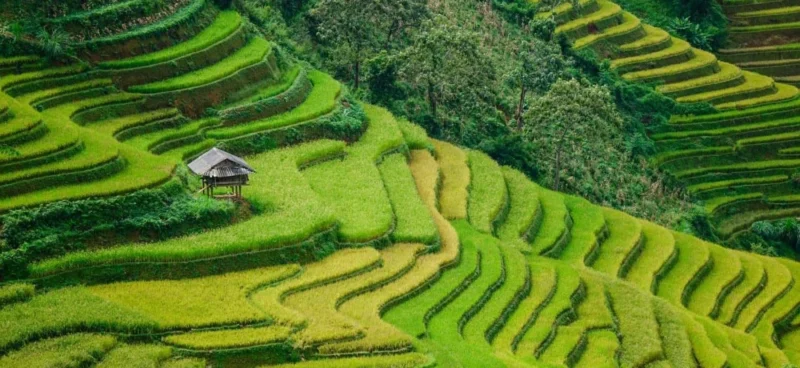
Rice terraces at Ta Phin Village
Ta Phin Village is renowned for its vibrant community of Red Dao and Black H’mong ethnic groups. The village is famous for its stunning terraced fields, traditional crafts, and cultural experiences. Ta Phin is a must-visit for travelers who want to explore both the natural beauty and the diverse cultural heritage of the region.
- Unique Landscape: The rice terraces in Ta Phin are vast and picturesque, offering panoramic views of rolling hills covered in neatly arranged layers. The terraces here are often mist-covered in the early mornings, adding a mystical charm to the landscape. The contrast between the terraced fields and the surrounding dense forest creates a striking visual experience.
- Cultural Experience: Ta Phin is well-known for its traditional Red Dao herbal baths, which are believed to have medicinal properties. Visitors can also explore the village’s craft workshops, where locals produce colorful brocades using hand-woven techniques passed down through generations. The blend of nature and culture makes Ta Phin a unique destination in Sapa.
6. Ho Village
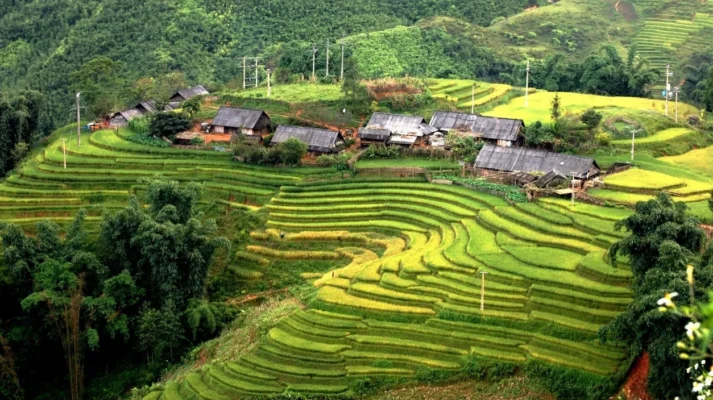
Rice terraces Ho Village
Ho Village is located deeper in Sapa’s countryside, offering a more secluded and authentic experience compared to more touristy areas. This village is home to the Tay ethnic group and is surrounded by spectacular rice terraces, lush forests, and flowing streams. Ho Village is perfect for those who want to experience the serene beauty of Sapa’s remote landscapes.
- Unique Landscape: The rice terraces in Ho Village are expansive and have a more rustic charm, surrounded by dense bamboo groves and forested hills. The terraces here are less developed, preserving their natural beauty and traditional farming techniques. During harvest season, the golden fields stretch as far as the eye can see, providing endless photo opportunities.
- Cultural Experience: The Tay people in Ho Village are known for their stilt houses, built from bamboo and wood, which blend harmoniously with the surrounding environment. Visitors can join the locals in their daily farming activities, fish in the nearby streams, or enjoy a traditional Tay meal. The village’s remote location and unspoiled culture offer a deep connection with both nature and the local way of life.
III. Travel Experiences at Sapa Rice Terraces
1. Trekking Through the Rice Terraces and Ethnic Villages
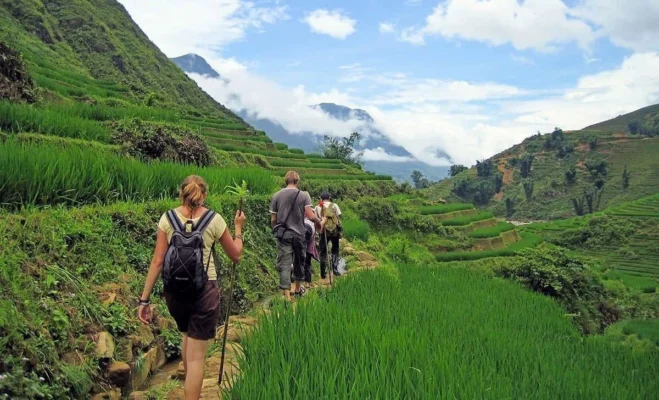
Trekking through the terraced fields is a wonderful experience.
Trekking through Sapa rice terraces offers a unique and immersive experience. As you hike along the winding paths, you’ll be surrounded by stunning landscapes of layered terraces cascading down the hillsides.
The trek typically passes through several ethnic villages, such as Lao Chai, Ta Van, and Cat Cat, where you can witness the daily lives of the H’Mong, Dao, and other indigenous communities.
The treks range from easy day trips to more challenging multi-day routes, allowing you to choose an adventure that fits your fitness level. Trekking is the best way to truly appreciate the artistry behind these terraces, sculpted by generations of farmers.
You will be like: Northern Vietnam Itinerary
2. Discovering Traditional Local Life
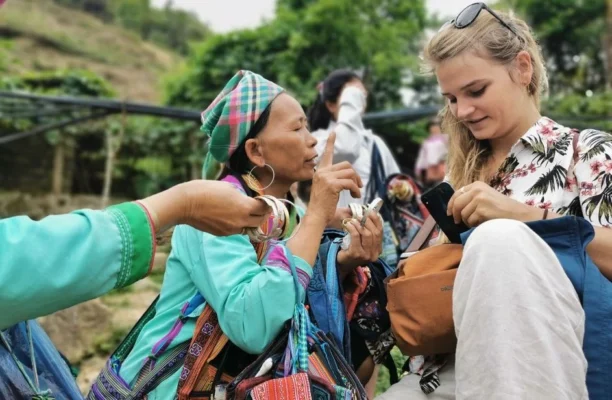
Tourists to Sapa will have the opportunity to interact with indigenous ethnic minorities.
One of the highlights of visiting the Sapa rice terraces is the opportunity to interact with the local ethnic people. These communities have preserved their traditional way of life for centuries.
You’ll have the chance to engage with villagers, learn about their customs, and observe their daily routines. Many locals are skilled artisans, producing intricate handicrafts such as textiles, embroidery, and silver jewelry.
You can even try your hand at some of these crafts under the guidance of the artisans. By connecting with the locals, you gain a deeper understanding of their culture, resilience, and how they harmonize with nature.
Do not miss: Sapa Tour from Hanoi 7 Days
3. Experiencing Agriculture with the Locals
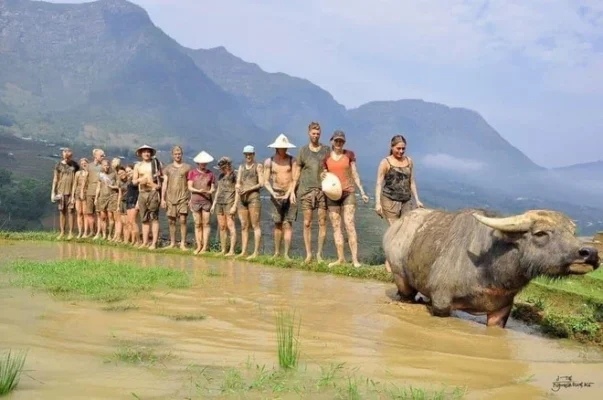
A day of experience as a farmer for tourists.
For a more hands-on experience, many villages offer opportunities to participate in farming activities. You can join local farmers in planting or harvesting rice, depending on the season. This experience allows you to get a sense of the hard work and dedication involved in maintaining these beautiful terraces.
You might find yourself working in the mud, transplanting rice seedlings, or learning the traditional methods of threshing and drying rice. Engaging in these activities is not only rewarding but also provides insight into the agricultural practices that have sustained these communities for generations. It’s a memorable way to connect with both the land and its people.
Do not miss: Best things to do in Sapa
IV. Best Time to Visit Sapa Rice Terraces
When planning a trip to the Sapa rice terraces, timing is key to experiencing their beauty at its peak. The terraces change dramatically with the seasons, offering distinct yet equally stunning views. Here are the two most popular times to visit:
1. May-June: The Water-Pouring Season
From May to June, the rice terraces enter the water-pouring season. This period marks the beginning of the rice planting cycle, where the fields are filled with water, creating mirror-like reflections of the sky and surrounding mountains.
During this time, the terraces sparkle in the sunlight, and the newly planted rice shoots give off a hint of vibrant green. This is when the landscapes appear like natural works of art, with layers of flooded terraces cascading down the hillsides.
It’s also a time of high activity in the villages as local farmers work the fields, providing an authentic glimpse into the traditional farming practices of the region.
2. September–October: The Golden Harvest Season
From September to October, the rice terraces reach their most visually striking phase during the golden harvest season. By this time, the rice has fully ripened, turning the fields into a sea of rich, golden hues that stretch as far as the eye can see. This is widely considered the best time to visit Sapa if you want to witness the terraces at their most picturesque.
The landscape is a photographer’s dream, with every layer of the terraces glowing under the autumn sun. The air is crisp, and the hillsides are bustling with harvest activities, making it an ideal time to experience both the natural beauty and the cultural richness of the region.
Learn more about: Sapa weather
V. How to Get to Sapa
Getting to Sapa from Hanoi is quite convenient, with various transportation options available to suit different preferences and budgets.
- Train: The train journey from Hanoi to Sapa (Lao Cai Station) is a popular choice, offering a comfortable and scenic ride. It takes around 8–9 hours, typically overnight, allowing travelers to sleep and arrive refreshed.
- Bus: Buses are a more direct option, taking 5–6 hours to travel from Hanoi to Sapa. They are ideal for those looking for a faster journey compared to the train.
- Limousine Service: For those who prefer comfort and convenience, luxury limousine vans are an excellent choice. They are faster than the train and provide a premium travel experience with spacious seating and high-end amenities.
VI. Accommodation in Sapa
Sapa offers a variety of accommodation options that allow visitors to enjoy breathtaking views of the rice terraces. Here are some recommended Sapa hotels:
1. Topas Ecolodge
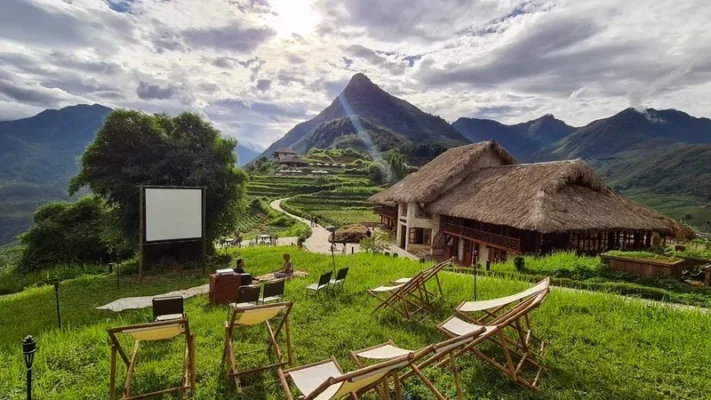
Topas Ecolodge
Located about 18 kilometers from Sapa town, Topas Ecolodge is a luxury resort offering a tranquil escape surrounded by stunning rice terraces. The lodge is known for its eco-friendly practices and minimalist yet stylish bungalows with panoramic views. Guests can enjoy a stunning infinity pool that overlooks the terraced fields, creating a unique blend of luxury and natural beauty.
2. Sapa Clay House
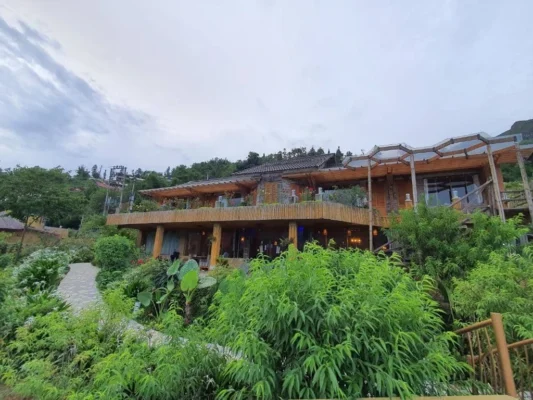
Sapa Clay House
Nestled in the Muong Hoa Valley, Sapa Clay House offers traditional architecture with a touch of modern comfort. The eco-friendly homestay is built from local materials like clay and wood, blending harmoniously with the surrounding nature. Each room features a private balcony or terrace with sweeping views of the rice terraces and surrounding mountains.
Click here: Best homestays in Sapa
3. Eco Palms House
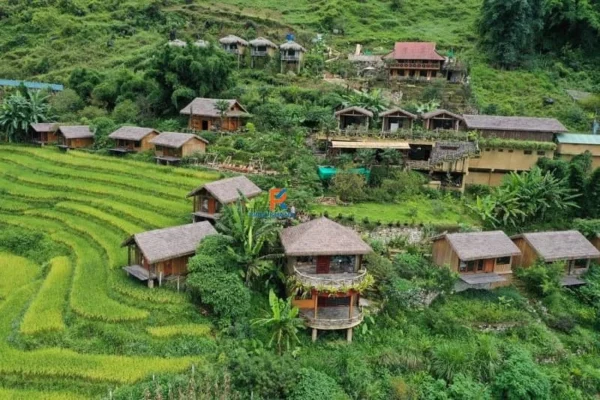
Eco Palms House
Located in Lao Chai village, Eco Palms House is a boutique homestay that provides a cozy and intimate atmosphere. The homestay consists of individual bungalows designed in the style of ethnic minority houses. The property offers unobstructed views of the terraced fields, making it a perfect spot for travelers seeking a peaceful retreat in nature.
Read more: Best Sapa Hotels
4. Aira Boutique Sapa Hotel & Spa
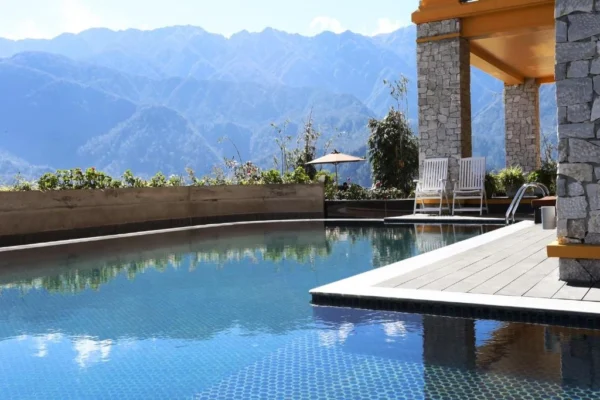
Aira Boutique Sapa Hotel & Spa
Located near the center of Sapa town, Aira Boutique Sapa Hotel & Spa offers both convenience and stunning views. The hotel’s hillside location provides a perfect vantage point for observing the rice terraces and Fansipan Mountain. In addition to luxurious rooms with terrace views, the hotel features a spa, an outdoor pool, and a restaurant serving both local and international cuisine.
In conclusion, the Sapa terraced rice fields are a stunning blend of natural beauty and cultural heritage, offering a unique glimpse into the traditional agricultural practices of Vietnam’s highlands. These intricate landscapes, shaped by the indigenous ethnic groups, provide breathtaking views throughout the year—from the lush green of spring to the golden hues of autumn. Visiting Sapa’s rice terraces not only allows you to experience picturesque scenery but also to engage with local cultures and traditional farming methods, making it a truly memorable and enriching travel experience.
See more: Sapa travel tips



